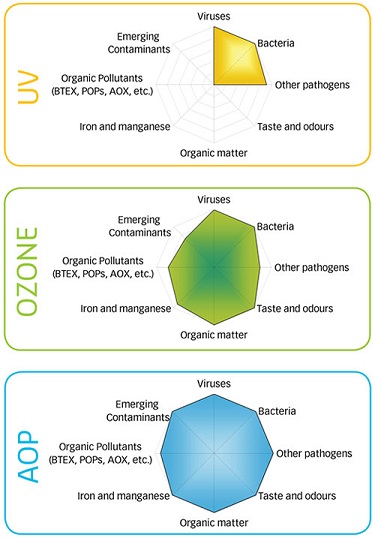AOP (Advanced Oxidation Process) Systems
Complex problems require radical solutions
Complex problems require radical solutions
State-of-the-art AOP systems use or combine two or more oxidizing agents to create hydroxyl radicals, the ultimate oxidant for elimination of organic pollutants. We design and manufacture the widest range of ultraviolet, ozone and AOP systems incorporating the most sophisticated electronics and lamp technologies available to meet the needs of industrial and municipal customers. Our experts partner with customers to achieve the best overall answer to meet treatment requirements safely and economically.

